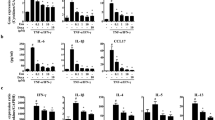Abstract
Aloe vera gel is widely used in the treatment of an array of disturbances, especially skin disorders. The wound-healing effects have been attributed to its moisturizing and anti-inflammatory effects as well as its beneficial effect on the maturation of collagen. The aim of the present study is to compare the effects of topically applied extracts of Aloe ferox with that of Aloe vera on the symptoms as well as IgE levels of a mouse model of atopic dermatitis (AD). Mice were sensitized and challenged with 2,4-dinitrochlorobenzene and treated afterwards for 10 consecutive days with the gels of either A. ferox or A. vera applied topically to the affected areas. A placebo gel was used for the control mice. Blood was collected at the beginning and end of the treatment period to measure serum IgE levels. Although the gels of both the Aloe species inhibited the cutaneous inflammatory response as well as serum IgE levels in the rats, the extracts of A. ferox were superior to that of A. vera in reducing IgE levels. The gels of A. ferox and A. vera, applied topically, may be a safe and useful alternative to antihistamines and topical corticosteroids, for the treatment of patients suffering from recurring chronic AD.


Similar content being viewed by others
References
Arellano FM, Wentworth CE, Arana A, Fernandez C et al (2007) Risk of lymphoma following exposure to calcineurin inhibitors and topical steroids in patients with atopic dermatitis. J Invest Dermatol 127:808–816
Ashcroft DM (2005) Efficacy and tolerability of topical pimecrolimus and tacrolimus in the treatment of atopic dermatitis: meta-analysis of randomised controlled trials. Brit Med J 330:516–522
Beltrani VS (1999) The clinical spectrum of atopic dermatitis. J Allergy Clin Immun 104:587–598
Capasso F, Borrelli F, Capasso R (1998) Aloe and its therapeutic use. Phytother Res 12:124–127
Charman CR, Morris AD, Williams HC (2000) Topical corticosteroid phobia in patients with atopic eczema. Brit J Dermatol 142:931–936
Chen W, Van Wyk B-E, Vermaak I et al (2012) Cape aloes: a review of the phytochemistry, pharmacology and commersialisation of Aloe ferox. Phytochem Lett 5:1–12
Cock IE (2015) The genus aloe: phytochemistry and therapeutic uses including treatments for gastrointestinal conditions and chronic inflammation. Drug Res 70:179–235
Duke JA (1997) The green pharmacy. Rodale Press, Emmaus
Ellis C, Luger T, Abeck D et al (2003) International consensus conference on atopic dermatitis II (ICCAD II): clinical update and current treatment strategies. Brit J Dermatol 148:3–10
Eshun K, He Q (2004) Aloe vera: a valuable ingredient for the food, pharmaceutical and cosmetic industries—a review. Crit Rev Food Sci 44:91–96
Henge UR, Ruszicka T, Schwartz RA et al (2006) Adverse effects of topical glucocorticosteroids. J Am Acad Dermatol 54:1–15
Kay GG (2000) The effects of antihistamines on cognition and performance. J Allergy Clin Immunol 105(6):S622–S625
Kim J, Lee I, Park S, Choue R (2010) Effects of Scutellariae radix and Aloe vera gel extracts on immunoglobulin E and cytokine levels in atopic dermatitis NC/Nga mice. J Ethnopharmacol 132(2):529–532
Lee S-J, Oh S-G, Seo S-W et al (2007) Oral administration of Astragalus membranaceus inhibits the development of DNFB-induced dermatitis in NC/Nga mice. Biol Pharm Bull 30:1468–1471
Leund DY (1997) Atopic dermatitis: immunobiology and treatment with immune modulators. Clin Exp Immunol 107(1):25–30
Reynolds T, Dweck AC (1999) A ferox extracts have been described to possess anti-inflammatory, anti-bacterial and anti-fungal properties plus increased wound healing. J Ethnopharmacol 28(1–3):3–37
Sidbury R, Hanifin JM (2000) Systemic therapy of atopic dermatitis. Clin Exp Dermatol 25:559–566
Stephen P, Stone SP, Muller SA, Muller MD, Gerald J, Gleich MD (1973) IgE levels in atopic dermatitis. Arch Dermatol 108(6):806–811
Acknowledgments
This study was supported by a Grant from the House of Aloes, Albertinia, South Africa.
Author information
Authors and Affiliations
Corresponding author
Rights and permissions
About this article
Cite this article
Finberg, M.J., Muntingh, G.L. & van Rensburg, C.E.J. A comparison of the leaf gel extracts of Aloe ferox and Aloe vera in the topical treatment of atopic dermatitis in Balb/c mice. Inflammopharmacol 23, 337–341 (2015). https://doi.org/10.1007/s10787-015-0251-2
Received:
Accepted:
Published:
Issue Date:
DOI: https://doi.org/10.1007/s10787-015-0251-2



